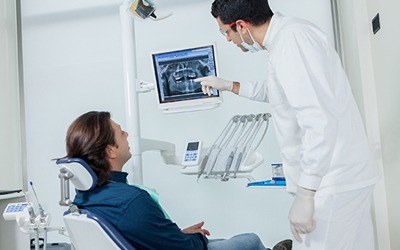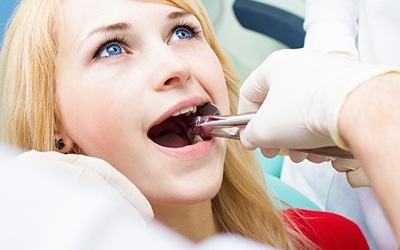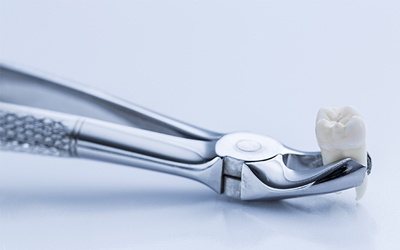 Serving McKinney, Frisco & Prosper
Serving McKinney, Frisco & Prosper
McKinney Tooth Extraction
 The TriCorner Dentistry team partners with every patient we treat to help them achieve and maintain their optimal level of oral health. Unfortunately, we can’t always avoid every dental health concern, and there are some situations where the best option for any patient is to remove a tooth and preserve the best overall health. If you need to learn more about tooth extractions or any of the other restorative dentistry services we provide, contact the TriCorner Dentistry team for answers to your questions or to schedule a consultation appointment in our dental office serving McKinney, Prosper and Frisco.
The TriCorner Dentistry team partners with every patient we treat to help them achieve and maintain their optimal level of oral health. Unfortunately, we can’t always avoid every dental health concern, and there are some situations where the best option for any patient is to remove a tooth and preserve the best overall health. If you need to learn more about tooth extractions or any of the other restorative dentistry services we provide, contact the TriCorner Dentistry team for answers to your questions or to schedule a consultation appointment in our dental office serving McKinney, Prosper and Frisco.
When are tooth Extractions Recommended?

There are many situations where our team may need to remove one or more teeth, including:
- Severe decay or damage that makes it impossible to save the tooth with other restoration options like dental crowns.
- Impacted teeth that are unable to erupt from the gums on their own may need to be extracted and replaced.
- Baby teeth that do not fall out on their own, blocking the developing adult tooth below.
- To prepare teeth for orthodontics or advanced partial or full denture restorations one or more teeth may be removed.
- Wisdom teeth, third molars, are commonly extracted because they lead to numerous oral health concerns like crowding and impaction.
How are Teeth Extractions Performed?

Every patient is different, and we’ll need to address your unique situation to provide an exact plan to remove your tooth. However, most patients either have teeth “pulled” or surgically extracted. Pulling teeth requires the tooth be fully erupted from the gums. Then, we use a clasping tool to shift the tooth back and forth until it breaks free from the socket. Surgical removal simply means that we need to cut away tissue to expose the tooth or allow us access to the supportive structures of teeth prior to removal.
Caring for Your Smile Following Tooth Extraction

After your tooth is removed, you will experience some discomfort and bleeding for the first 48 hours. Following these first two days, your pain should begin to diminish, and all bleeding should be stopped. If you continue to experience severe or worsening pain, your extraction site is still bleeding after two days, or you notice warning signs of infection, please call our office right away. During the treatment planning process, we will provide you and/or a trusted family member or friend with specific at-home care instructions to help you make a fast, painless recovery. Some things to keep in mind include:
- Take all medications and pain relievers as directed throughout your recovery to ensure comfort and prevent complications.
- Keep clean gauze over the extraction site until bleeding has completely stopped.
- Avoid eating hard foods for several days following treatment. We recommend liquids and very soft foods only for the first few days, and patients can gradually add foods as they feel comfortable. Avoid chewing near the extraction site until your smile is fully healed.
- Use ice packs to relieve pain, avoid swelling, and slow bleeding. We recommend using ice packs at intervals of 20 minutes on and 20 minutes off.
- Brush and floss healthy teeth as usual but do your best to avoid the extraction site while cleaning. We may provide you with an antimicrobial mouth rinse to use as you heal.